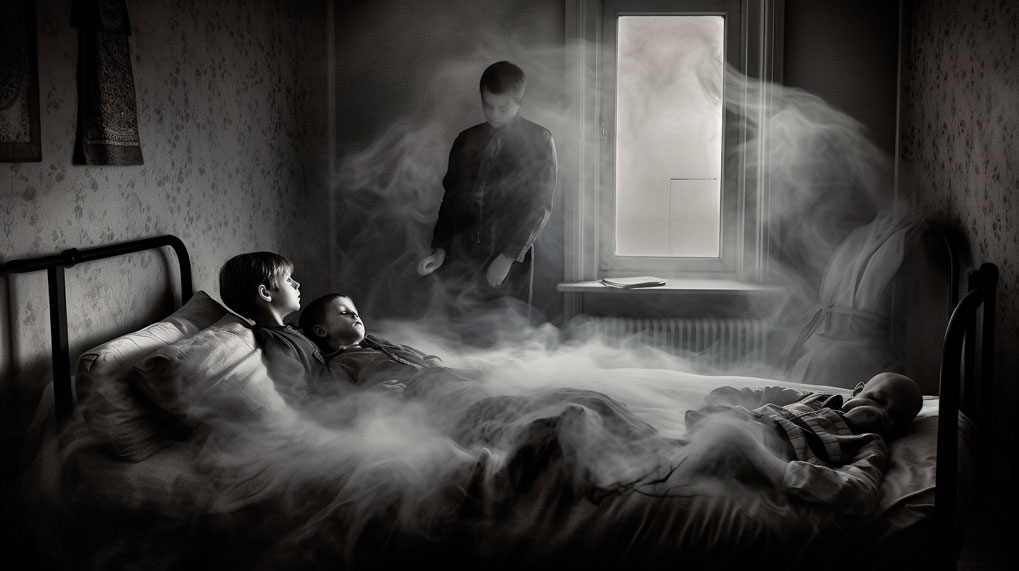Le radon: est-ce qu'il y a dans votre maison ce tueur silencieux!
Le radon est un gaz radioactive incolore et inodore qui se trouve dans le sol et dans les roches. Il pose un risque important pour la santé des Canadiens et canadiennes, étant la deuxième cause de cancer du poumon après le tabac. Le radon est présent dans toutes les parties du Canada et il peut s'introduire dans les maisons par les fissures des fondations ou des murs, les planchers, les drains, les trottoirs, les cheminées et autres ouvertures vers le sol.
Qu'est-ce que le radon?
Le radon est un gaz radioactif
Le radon est un gaz radioactif qui se forme naturellement par la désintégration de l'uranium dans le sol et dans les roches. Lorsqu'il se désintègre, il émet des particules alpha qui peuvent endommager les cellules du corps, notamment celles des poumons.
Il est la deuxième cause de cancer du poumon après le tabac
Le radon est un des principaux facteurs de risque pour le cancer du poumon. Les particules alpha qu'il émet peuvent endommager les cellules des poumons et augmenter le risque de mutation génétique qui peut mener au cancer.
Le radon est présent dans toutes les parties du Canada
Le radon est un problème de santé publique important pour les Canadiens et canadiennes. Toutes les régions du Canada sont touchées, mais les concentrations de radon varient d'une région à l'autre. En général, les concentrations sont plus élevées dans les zones où il y a plus d'uranium dans le sol et dans les roches.
Comment mesurer la concentration de radon dans votre maison?
Il est possible d'utiliser des tests de radon disponibles dans les magasins de rénovation domicile
Il est possible de mesurer la concentration de radon dans votre maison avec un test de radon. Les tests de radon sont disponibles dans les magasins de rénovation domiciliaire et en ligne. Ces tests sont généralement peu coûteux et faciles à utiliser.
Si la concentration annuelle moyenne de radon dépasse les 200 Bq/m3 dans les espaces occupés d'une habitation, il est recommandé de prendre des mesures correctives. Les délais recommandés pour apporter ces corrections dépendent de la concentration moyenne de radon dans votre maison : moins d'un an si la concentration dépasse 600 Bq/m3 et moins de deux ans si la concentration se situe entre 200 Bq/m3 et 600 Bq/m3. Dans certains cas, les mesures préventives ne suffisent pas, et il est nécessaire d'installer un système d'évacuation de radon présent sous les fondations avant qu'il ne pénètre dans les espaces habitables du bâtiment. Santé Canada recommande de diminuer la concentration de radon au plus bas niveau possible.
Le test doit être installé pendant au moins trois mois
Le test de radon doit être installé dans votre maison pendant une période d'au moins trois mois. Pendant cette période, il doit être placé dans une pièce utilisée régulièrement, à proximité du sol et à une distance d'au moins 30 centimètres de tout mur et de tout objet. La durée recommandée pour le test est de trois à douze mois. Plus la durée du test est longue, plus précise sera la mesure.
Il est recommandé de faire tester tous les niveaux inférieurs de votre maison
Il est recommandé de tester tous les niveaux inférieurs de votre maison, y compris le sous-sol et le rez-de-chaussée. Si vous avez plusieurs niveaux dans votre maison, vous devez installer un test dans chaque niveau. Si vous construisez une nouvelle maison, vous devriez demander à votre entrepreneur de faire une mesure de la concentration du radon avant de commencer la construction.
Quels sont les risques pour la santé en cas d'exposition au radon?
Le radon peut provoquer des problèmes de santé chez les non-fumeurs et les fumeurs
Le danger du radon est réel pour tous les fumeurs et non-fumeurs. Les niveaux élevés de radon dans l'air intérieur peuvent augmenter le risque de cancer du poumon et d'autres problèmes de santé. Les enfants et les personnes âgées peuvent être plus vulnérables aux effets du radon, car leurs poumons peuvent être plus sensibles aux particules alpha émises par le radon.
Les poumons sont particulièrement vulnérables au radon
Les effets sur la santé causés par le radon sont dus aux particules alpha émises par le gaz radioactif. Lorsque ces particules sont inhalées, elles peuvent s'installer dans les poumons et endommager les cellules. Les poumons sont donc particulièrement vulnérables au radon et les risques de cancer du poumon sont plus élevés pour les personnes exposées au radon pendant de longues périodes.
Les concentrations élevées de radon augmentent le risque de cancer du poumon
Les concentrations élevées de radon dans l'air intérieur des habitations peuvent augmenter considérablement le risque de cancer du poumon, surtout chez les fumeurs. Selon Santé Canada, environ 16% des cas de cancer du poumon au Canada sont causés par l'exposition au radon.
Comment réduire le radon dans votre maison?
Les fissures dans les bâtiments doivent être scellées
Pour réduire la concentration de radon dans votre maison, vous devriez d'abord sceller toutes les fissures dans les fondations et dans les murs du bâtiment. Cela peut aider à empêcher le radon de pénétrer dans votre maison.
L'installation d'un système de ventilation peut réduire les concentrations de radon dans l'air intérieur
Si les niveaux de radon dans votre maison sont élevés, vous devriez envisager l'installation d'un système de ventilation. Un système de ventilation peut aider à réduire les concentrations de radon dans l'air intérieur de votre maison. Les systèmes de ventilation sont généralement simples à installer et peuvent être très efficaces pour réduire la concentration de radon dans l'air intérieur.
Il est recommandé de faire appel à des professionnels pour réduire les niveaux élevés de radon
Si les niveaux de radon dans votre maison sont très élevés, vous devriez faire appel à des professionnels pour vous aider à réduire la concentration de radon dans votre maison. Les professionnels peuvent vous recommander des solutions personnalisées pour votre maison et peuvent vous aider à évaluer l'efficacité des mesures prises pour réduire le radon.
En conclusion, le radon est présent partout sur le territoire Québécois, certaines régions sont plus affectées que d'autre et il est donc important de connaître ces zones. Pour le coût abordable que représente l'évaluation du Radon dans votre propriété, il est sage d'être préventif dans votre démarche. Le Radon est un gaz radioactif inodore et invisible qui peut entraîner des problèmes de santé graves s'il est présent à des niveaux élevés dans votre propriété. En évaluant votre propriété pour détecter la présence de Radon, vous pouvez prendre les mesures nécessaires pour éliminer ou réduire les niveaux de Radon. Cela peut vous assurer que vous et votre famille respirez un air sain, ce qui peut réduire considérablement le risque de développer des problèmes de santé liés à l'exposition au Radon. En fin de compte, l'évaluation du Radon est un investissement judicieux pour protéger votre santé et celle de votre famille à long terme.
Q: Qu'est-ce que le radon?
A: Le radon est un gaz radioactif incolore, inodore et insipide qui se trouve naturellement dans le sol.
Q: Quels sont les effets du radon sur la santé?
A: Le radon est la deuxième cause de cancer du poumon après le tabagisme. Les particules radioactives inhalées peuvent endommager les cellules des poumons et conduire à des cancers.
Q: Comment mesure-t-on le radon?
A: Le radon peut être mesuré avec un test de radon. Les appareils de mesure peuvent être achetés ou loués et sont facilement disponibles.
Q: Quelle est la quantité de radon qui est considérée comme dangereuse?
A: Il n'y a pas de niveau sûr de radon, mais le niveau recommandé est inférieur à 200 Bq/m3 (picocuries par litre ou pCi/L).
Q: Est-ce que le radon est présent dans ma maison?
A: Le radon se trouve dans toutes les habitations, mais la concentration peut varier selon la géologie locale. Il est recommandé de tester votre maison pour connaître la concentration de radon à l'intérieur.
Q: Comment réduire le radon dans ma maison?
A: Pour réduire le radon dans une maison, il est recommandé de sceller les ouvertures autour des planchers, des murs et des tuyaux. Les sous-sols doivent également être ventilés.
Q: Y a-t-il des normes spécifiques au Canada pour le radon?
A: Oui, au Canada, la concentration de radon dans l'air intérieur d'une maison ne doit pas dépasser 200 Bq/m3.
Q: Comment savoir si la concentration de radon dans ma maison est élevée?
A: Vous pouvez connaître la concentration de radon dans votre maison en utilisant un test de radon. Les instructions sont facilement disponibles et peuvent être suivies par tout le monde.
Q: Quelles sont les mesures de sécurité à prendre pour réduire le radon?
A: Il n'y a pas de mesure de sécurité absolue pour se protéger complètement contre le radon, mais il est recommandé de tester et de réduire le radon dans une habitation.
Q: Le radon se trouve-t-il principalement dans les sous-sols?
A: Le radon peut se trouver dans toutes les parties d'une maison. Cela dépend de la géologie locale et de la construction de la maison.
Comment se Protéger Il est important de tester régulièrement les niveaux de radon dans votre maison et de prendre des mesures pour les réduire si nécessaire. Cela peut inclure l'installation d'un système de ventilation ou l'étanchéisation des fissures. Se protéger contre le radon, un gaz radioactif naturel provenant du sol pouvant s'infiltrer dans les bâtiments, est crucial pour préserver la santé des occupants. Voici des étapes à suivre pour vous protéger contre le radon :
1. **Testez les niveaux de radon** : Vous pouvez acheter des kits de test de radon dans des quincailleries ou en ligne, ou faire appel à un professionnel pour une évaluation précise. Il est recommandé de tester le niveau de radon dans votre maison tous les deux ans.
2. **Interprétez les résultats** : La mesure du radon se fait en becquerels par mètre cube (Bq/m^3) ou en picocuries par litre (pCi/L). Selon l'Agence de la santé publique du Canada, il est conseillé de prendre des mesures pour réduire le niveau de radon si la concentration moyenne annuelle dépasse 200 Bq/m^3.
3. **Réduisez les niveaux de radon si nécessaire** :
- **Installation d'un système de ventilation actif (SSPV)** : C'est la méthode la plus efficace pour réduire le radon. Elle implique l'installation d'un ventilateur et de tuyaux pour extraire le radon du sol sous la maison avant qu'il ne pénètre à l'intérieur.
- **Scellement des fissures**: Bouche les entrées potentielles pour le radon en scellant les fissures dans les fondations et les murs, autour des conduits et des tuyaux.
- **Améliorer la ventilation naturelle de la maison** : Cela peut aider à diluer la concentration de radon, mais son effet peut être limité et variable en fonction du temps.
4. **Maintenez et surveillez** : Une fois les systèmes de réduction du radon installés, il est important de les maintenir en bon état de fonctionnement et de tester régulièrement les niveaux de radon pour s'assurer que les mesures de réduction restent efficaces.
Il est essentiel de prendre au sérieux le radon en raison de son lien avec le cancer du poumon. Si vous êtes préoccupé par les niveaux de radon chez vous ou si vous souhaitez en savoir plus sur la manière de vous protéger, n'hésitez pas à consulter un professionnel de la santé environnementale ou un spécialiste de la réduction du radon.

